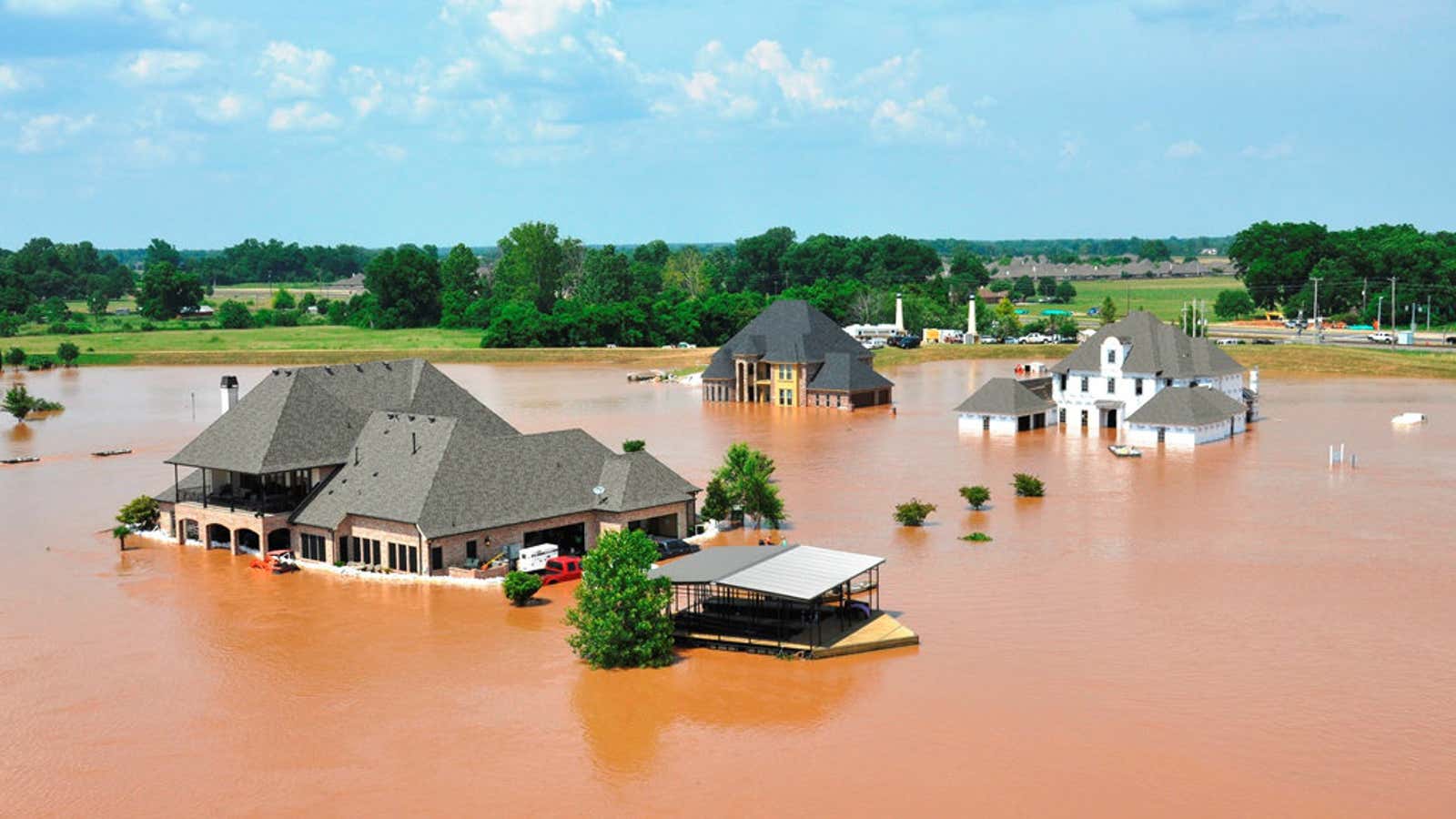Unprecedented rainfall and record flooding will make Hurricane Harvey one of the worst weather disasters in US history. With a massive storm comes massive insurance claims, as residents and businesses scramble to rebuild their lives. The National Flood Insurance Program (NFIP), created by Congress in 1968, allows property owners in high-risk areas to buy low-cost policies.
Standard homeowner’s insurance generally does not cover flood damage. The program is one of the few options many Americans have for financial recovery after a flood. To make a claim, you must have a policy in effect at the time of the storm (it takes 30 days from purchasing a policy for insurance to go into effect).
Flood victims who don’t already have flood insurance can apply for Federal Emergency Management Agency (FEMA ) disaster assistance. The Individuals and Households Program provides grants for repairs and housing-related expenses. The president needs declare an emergency or natural disaster in order to trigger the release of disaster-assistance funds. (President Donald Trump declared Hurricane Harvey a disaster on Aug. 25.) Read FEMA’S full guide to the Individuals and Households program here.
Here is what you should know about the National Flood Insurance Program, along with how to file a claim:
What is the National Flood Insurance Program?
Floods create more damage in the US each year than any other kind of natural disaster, so Congress created the program to provide low-cost policies private companies weren’t willing to provide in flood-prone zones. If a local community creates a management system to mitigate risks in Special Flood Hazard Areas, the government will make flood insurance available. The program is run by a division of FEMA. (The president does not need to declare a disaster in order for NFIP claims to be filed.)
The government subsidizes the cost of policies sold by about 80 private companies, which also process any claims. FEMA pays those bills. A private flood-insurance agent can help you make changes to, pay for, or renew flood policies.
Insured homeowners pay a monthly premium. If their property is damaged from flooding, the NFIP provides up to $250,000 for damages to real estate and as much as $100,000 for a home or building’s contents.
Originally, Congress intended for the program to be paid for entirely by premiums. Record flooding in recent years (attributed to climate change and rising sea temperatures) has left the program billions of dollars in debt. It now borrows from the US Treasury to cover losses, and pays back those loans with interest.
How do I file a claim with the National Flood Insurance program?
FEMA’s website has a full section of FAQs and tips for how to file a claim. Here is a basic rundown of the process:
- Contact your insurance agent. It’s always a good idea to keep the name of your insurance company, your policy number, and a phone number/email address for reaching you 24/7 handy. Your company’s adjuster should schedule an appointment to assess the damage to your property with about two days of filing a claim.
- Separate damaged from undamaged property. Take photographs of everything that is damaged, including things you plan on throwing away, structural damage, and any standing water. Make a list of anything that got lost or damaged, including the date of purchase, estimated value, and any receipts.
- The adjuster will help you prepare a proof of loss statement (the amount you are claiming, with backup documentation). You need to file your statement with your insurer within 60 days of the flood. You’ll receive your claim payment after you and the insurer agree on the amount of damages and the insurer has your signed Proof of Loss.
Read FEMA’s fact-sheet for filing a claim here.
